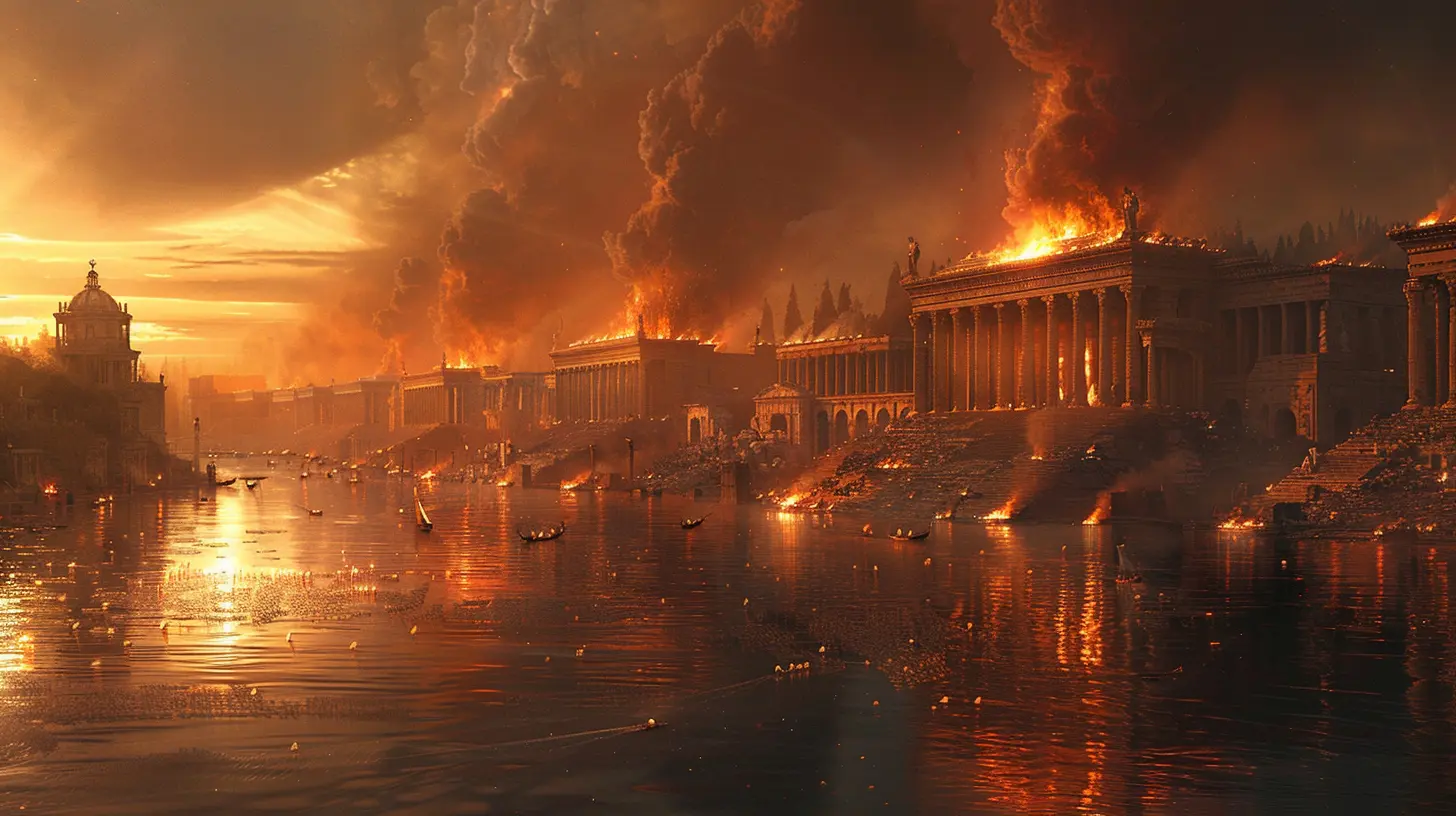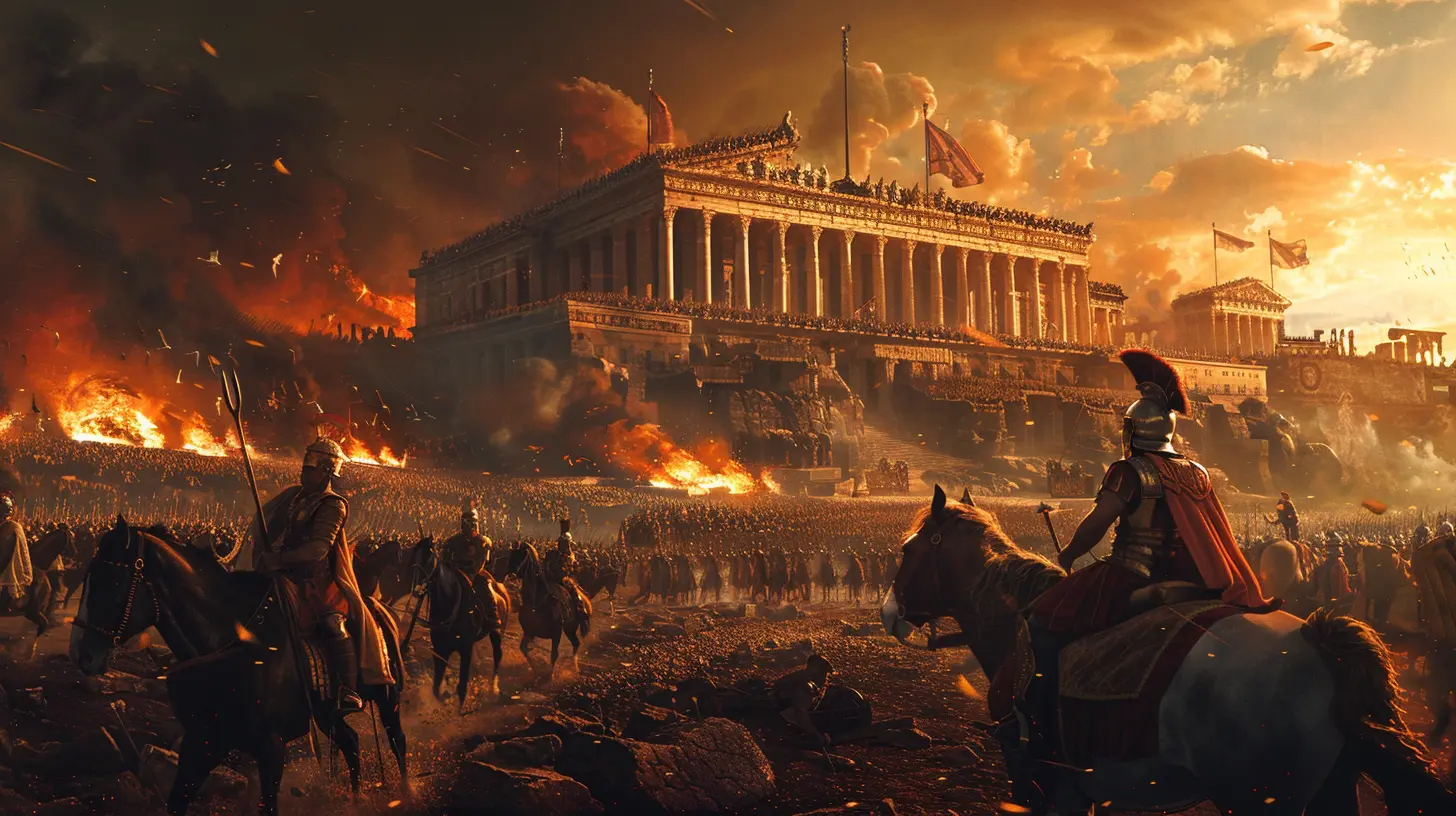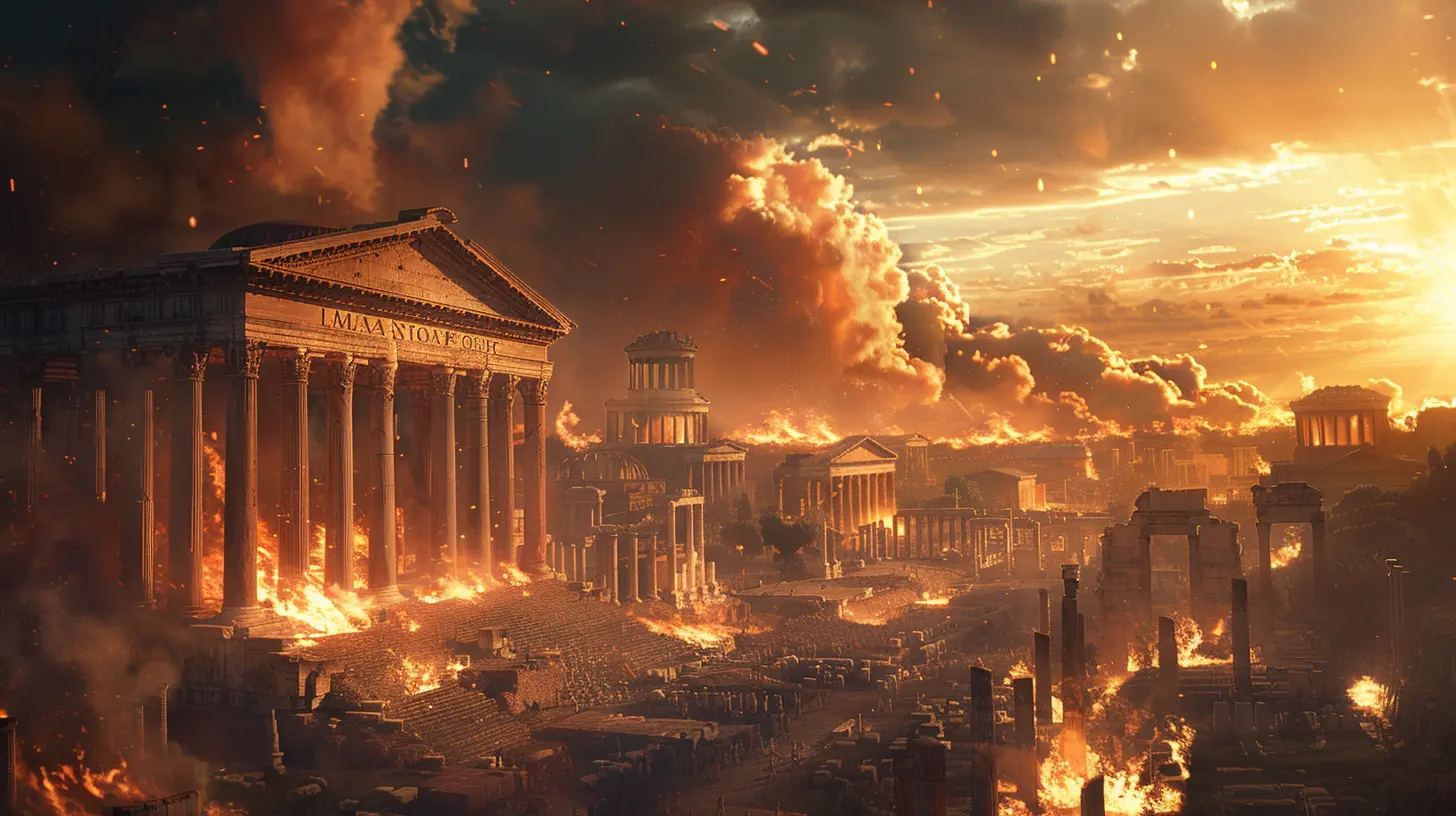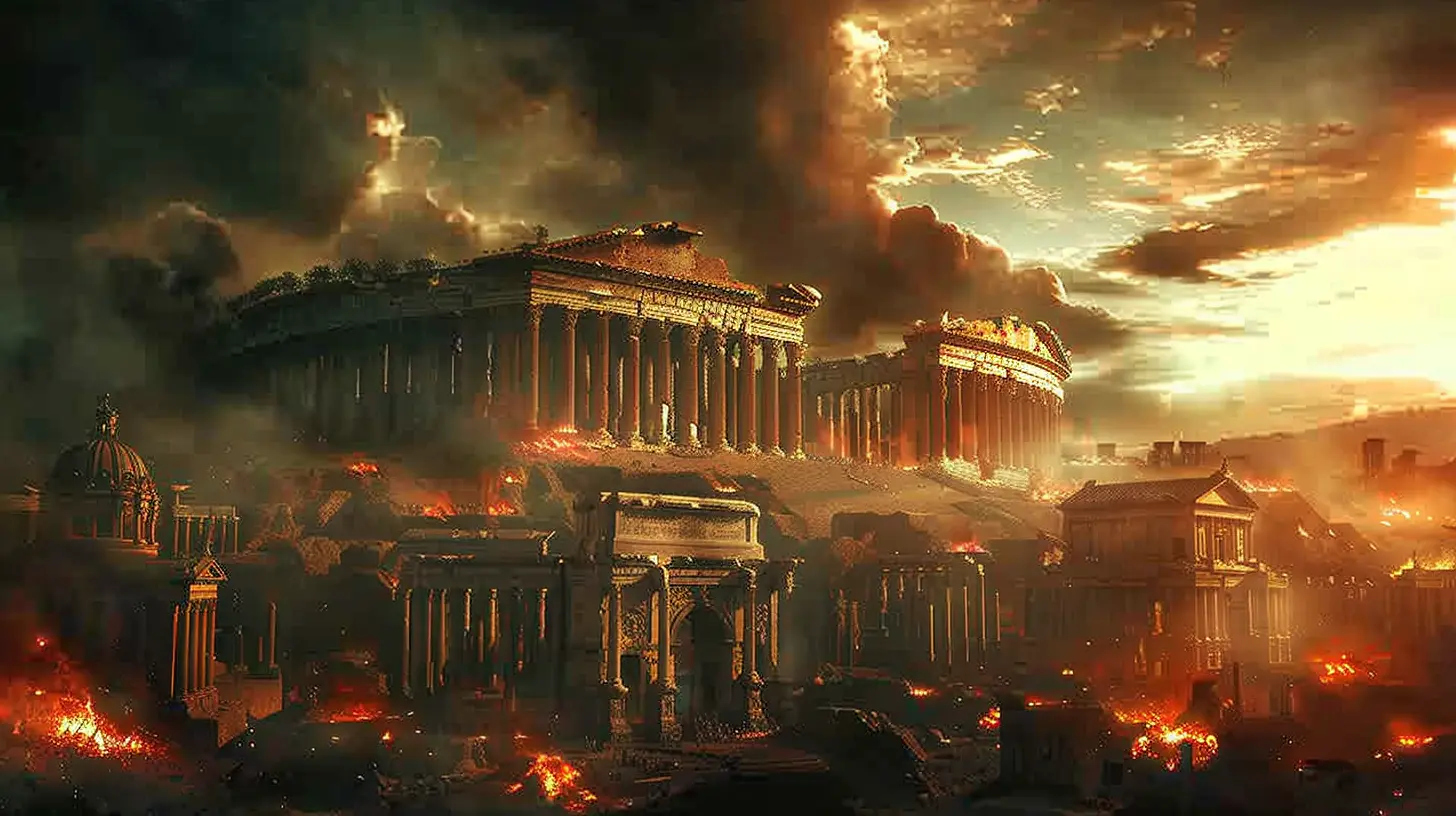The Rise and Fall of the Roman Empire
13 October 2025
Have you ever wondered how a small city-state by the Tiber River grew into one of the most powerful empires in human history—and then crumbled into dust? Yeah, me too. The story of the Roman Empire reads like an epic movie: filled with ambition, bravery, betrayal, glory, and eventually, tragedy. From Julius Caesar marching across the Rubicon to the dramatic sack of Rome, this is a tale that holds lessons for us even today.
In this article, we’re diving deep into the rise and fall of the Roman Empire. We’ll peel back the layers of history to uncover how Rome grew from humble beginnings into a superpower—then slowly unraveled. And trust me, it’s not just dry history. It's a wild ride.
The Humble Beginnings of Rome
Let’s rewind to around 753 BCE, where legend has it Rome was founded by twin brothers, Romulus and Remus, who were raised by a she-wolf. Whether or not that’s true (probably not), what matters is Rome began as a small settlement of farmers and shepherds.So how did it all start? The early Romans were tough. They had to be. The Italian Peninsula wasn’t exactly a friendly neighborhood in those days. Surrounded by rival tribes and constantly under threat, the Romans fought for survival.
What made them different? They were unbelievably adaptable. If they lost a fight, they didn’t sulk—they learned from it. They borrowed ideas from the Greeks and Etruscans, improved their military tactics, and quickly figured out how to keep their citizens loyal. That's Rome’s earliest superpower: flexibility.
The Roman Republic: Power to the People (Kind of)
Fast forward to 509 BCE. The Romans got fed up with kings. So, they booted out their last monarch and created the Roman Republic—a system where power rested (theoretically) with the people.But let’s be real. This “power to the people” thing? It mostly meant power to rich, land-owning males. Still, it was revolutionary at the time. Rome’s political system was complex—a mix of elected magistrates, a Senate, and popular assemblies.
And if you’re thinking, “That sounds a bit like modern democracy,” you’re not wrong. The Founding Fathers of the United States were actually inspired by the Roman Republic. Even the idea of checks and balances? Totally Roman.
During this period, Rome expanded like wildfire. Through a combo of military conquest, strategic alliances, and pure grit, it took over the Italian Peninsula and then moved steadily outward. By 264 BCE, Rome was ready to take on the big leagues.
The Punic Wars: Rome’s Ticket to the Mediterranean
Enter Carthage—Rome’s biggest rival. These guys were based in North Africa and controlled much of the western Mediterranean. Cue the Punic Wars (264–146 BCE), a trilogy of brutal conflicts that would change history.The most famous moment? Hannibal crossing the Alps with elephants. (Yes, actual elephants.) He terrorized Italy for over a decade but never managed to sack Rome. Eventually, Rome struck back hard, led by the general Scipio Africanus, and crushed Carthage.
By the end of the Third Punic War, Carthage was completely destroyed—literally leveled. Rome was now the uncontested boss of the Mediterranean.
The Rise of Julius Caesar: From Hero to Dictator
But with great power came great... instability. As Rome expanded, its internal politics got uglier. Wealth flowed in from the provinces, widening the gap between rich and poor. Soldiers returning from war found their farms ruined. The Senate was corrupt. Sound familiar?Into this chaos stepped Julius Caesar. He was brilliant, popular, ambitious—and dangerous to the Roman elite. After years of military success, especially in Gaul (modern-day France), he returned to Rome with an army, crossing the Rubicon River in 49 BCE—a direct challenge to the Senate.
Long story short, Caesar won the ensuing civil war and declared himself “dictator for life.” That didn’t sit well with many. In 44 BCE, a group of senators stabbed him—literally—to death on the Ides of March.
Ironically, trying to save the Republic by killing Caesar only hastened its end.
The Roman Empire: Augustus and the Pax Romana
After more rounds of civil war, Caesar’s adopted son Octavian came out on top. He took the title Augustus in 27 BCE, becoming the first Emperor of Rome. Officially, it was still a Republic... unofficially? It was an empire now.Under Augustus, the empire entered a golden age known as the Pax Romana (Roman Peace). Roads were built, trade flourished, cities expanded, and Roman law and culture spread across three continents: Europe, Asia, and Africa.
The Roman Empire had it all: grand architecture (hello, Colosseum), public baths, aqueducts, and even concrete. Yes, concrete—that stuff you drive on today? Romans were already using it over 2,000 years ago.
But holding such a massive empire together was no easy task. Emperors came and went—some good, others... not so much. (Nero and Caligula, anyone?)
Cracks in the Armor: Internal Decay and Division
By the 3rd century CE, things started to unravel. The empire was too big, the economy was strained, and enemies were pushing in from all sides.Inflation skyrocketed, trade shrunk, and political corruption peaked. Emperors were assassinated left and right. In one 50-year period, there were over 20 emperors—and most met violent ends.
To fix the chaos, Emperor Diocletian split the empire into Eastern and Western halves in 285 CE. Smart move, short-term. But in the long run? It drove the final nail into the coffin of unified Rome.
The Fall of the Western Roman Empire
By 476 CE, the Western Roman Empire had withered to a shadow of its former glory. Germanic tribes like the Visigoths and Vandals had already looted Rome. The final blow came when the Germanic leader Odoacer deposed the last Roman emperor—Romulus Augustulus.And just like that, a thousand-year-old empire collapsed.
But was it really that sudden? Not at all. It was death by a thousand cuts: economic woes, military defeats, internal decay, and just plain bad luck.
The Eastern Roman Empire: The Empire That Refused to Die
Here’s the twist most people forget: the Eastern Roman Empire, also called the Byzantine Empire, didn’t fall until 1453—a full millennium later! Centered in Constantinople (modern-day Istanbul), it kept Roman traditions alive long after the West had faded.So in a way, Rome never really died. Its language, laws, architecture, and ideas shaped the modern world—from the United States Constitution to modern-day legal codes.
Lessons From Rome: Why It Still Matters
Let’s take a step back. Why should we care about some ancient empire?Because Rome holds a mirror to our own societies. It shows us how ambition, innovation, and unity can build great civilizations. But it also warns us: inequality, corruption, and complacency can tear them apart.
It’s like watching your favorite TV series—one where the heroes rise, conquer, overreach, fall, and leave behind a legacy that echoes through time.
Final Thoughts
Rome wasn’t built in a day, and it didn’t fall in one either. Its rise was the result of courage, strategy, and visionary leadership. Its fall? A tragic blend of greed, chaos, and failure to adapt.So the next time you walk past a marble building, read about democracy, or use Roman numerals, remember: you're living in a world that Rome helped build.
History isn’t just about the past—it’s about understanding the present. And Rome’s story? It’s a masterclass on the heights we can achieve and the pitfalls we must avoid.
all images in this post were generated using AI tools
Category:
History LessonsAuthor:

Olivia Chapman
Discussion
rate this article
1 comments
Malia Wyatt
Ah, the Roman Empire—proof that even the mightiest can crumble under the weight of their own hubris. Who knew that decadence and bad leadership could outshine grandeur? Let’s take notes, world leaders!
October 16, 2025 at 4:11 AM

Olivia Chapman
Absolutely! The Roman Empire serves as a timeless reminder of the dangers of hubris and the consequences of neglecting wise leadership. Lessons for today’s leaders are critical.


